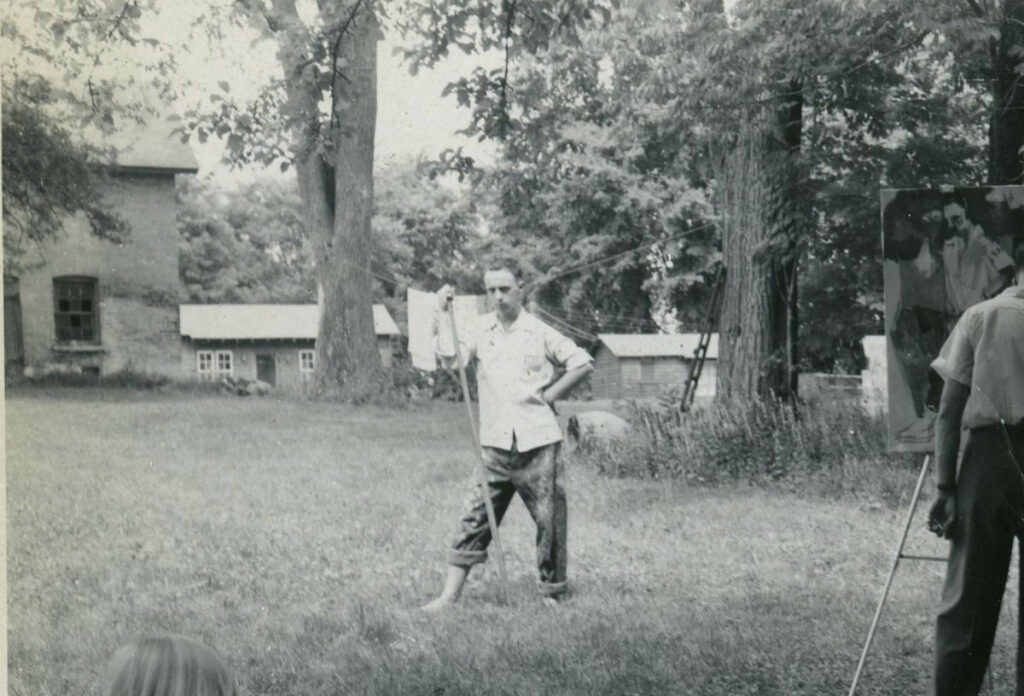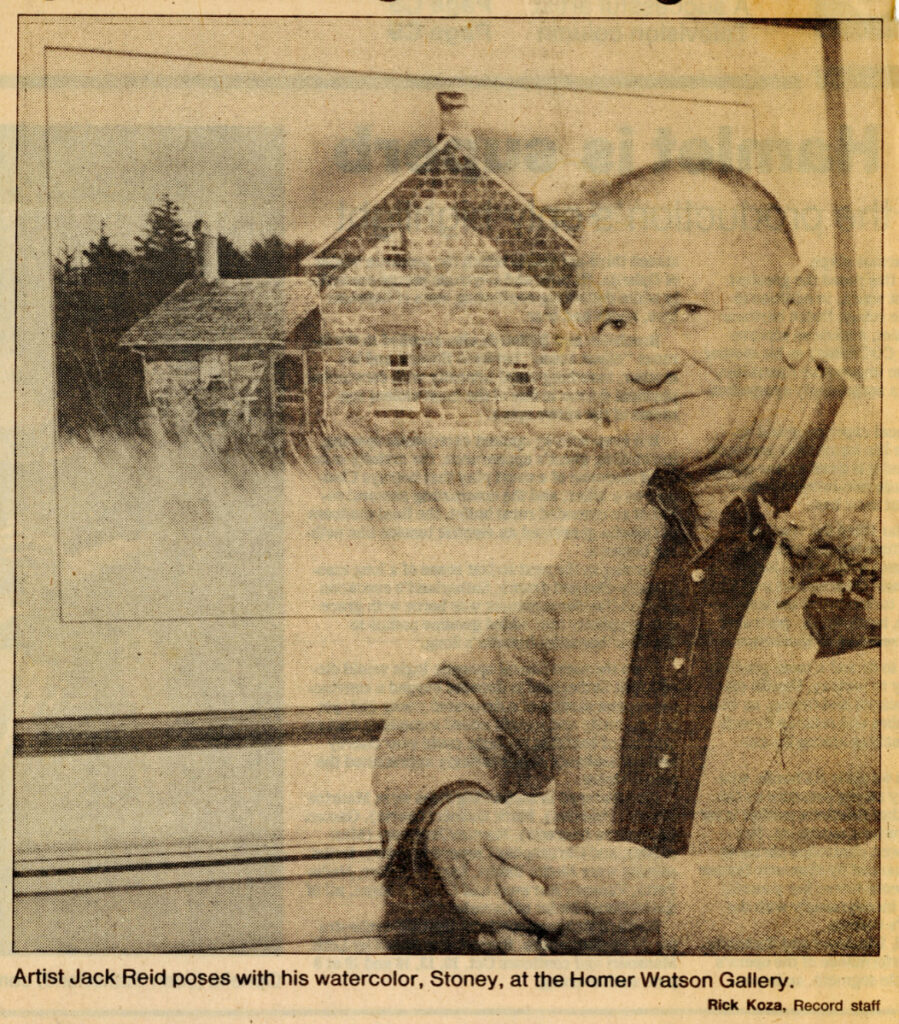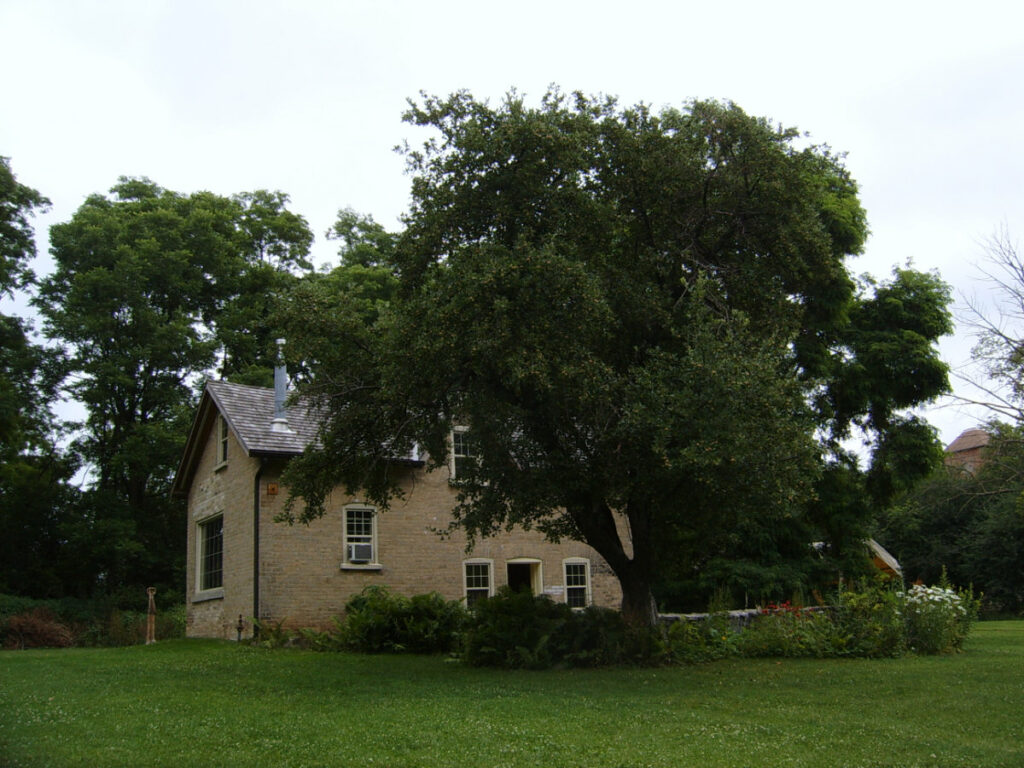The Coach House
The building behind the Watson House, currently used as a pottery studio, is called the coach house. Historically, a coach house was where a coach or carriage was kept along with the horses to pull it – there was also often a space for a coachman to live on site. However, Homer Watson House & Gallery’s coach house was not typically used for that purpose.
When Homer and Roxa Watson bought the property in 1883, some of the letters exchanged with the previous owner, Henry Lawrence Drake, include drawings of how the lots were divided. This hand-made property map refers to the area where the coach house is specifically as a stable (image on left).
The Watsons kept chickens and a cow and continued to use the space for animals for many years. It is suggested that the upper floor was for storing hay.[1]
The recollections of Grace Tilt, who worked as a maid for the Watsons, noted that Homer never actually owned a coach and typically walked or cycled to get where he needed to go.[2] Nevertheless, Homer’s niece Ruth Whiting remarked that the stable was converted into a coach house during her childhood in the early 1900s[3], and her sister, Jane Van Every, wrote that she remembered hearing horses stamping their hooves inside the building at night.[4] There is also some speculation that eventually the space may have become a garage when Homer purchased an automobile later in his lifetime.
When Homer passed away in 1936 and his sister Phoebe continued to live in the Doon home, one of her art students, Eldon Leis, recalls some of the deceased artist’s paints and easels being stored away in coach house.[5] Eldon noted that he and his friends called it a “haunted house”, though this was not elaborated on – perhaps referring to the stories of ghosts and séances connected to Homer’s practice of spiritualism.
Once Bess and Ross Hamilton purchased the property in 1948 to begin the Doon School of Fine Arts, the coach house’s upper floor became an option for student accommodation[6]. The lower floor was used as additional meeting and classroom space, and a bath house was constructed behind the building.[7] This set-up was later used by the Cayleys in the 1970s when they carried on the second iteration of the Doon School.In 1981, the city of Kitchener bought the Watson House from Ruthe Cayley. There were several debates on what should be done with it, and studies were completed to determine how it should be repaired, restored, and enjoyed by the public. This endeavor included the coach house, and one suggestion was to open it as a tearoom. Around 1985, The Coach House Café was opened and operated for about a year.
After the café’s closure, more repairs were made to the coach house throughout the 1990s, and artists used it seasonally as studio space. Eventually, it was turned into the pottery studio it is now, and in 2017, was winterized to allow for year–round programming.[10]
[1] Peter Stokes, Preservation Program for the Homer Watson House (Niagara-on-the-Lake, 1985)
[2] Ibid.
[3] Interview with Ruth Whiting, conducted by HWHG Staff, November 2, 1986.
[4] Jane Van Every, With Faith, Ignorance, and Delight (Aylesbury: Homer Watson Trust, 1967), 34
[5] Interview with Eldon Leis, conducted by HWHG Staff, August 1,1990
[6] Kenneth McLaughlin, Victoria Baker, and Darlene Kerr, Doon School of Fine Arts (Kitchener: Homer Watson House & Gallery),19
[7] Ibid.
[8] Ibid.
[9] Jane Wilson, “The soft style of a tough-looking artist”, Kitchener-Waterloo Record, October 8, 1985
[10] Johanna Weidner,”Homer Watson gallery gets federal funding to winterize pottery studio”, Waterloo Region Record, April 19, 2017






